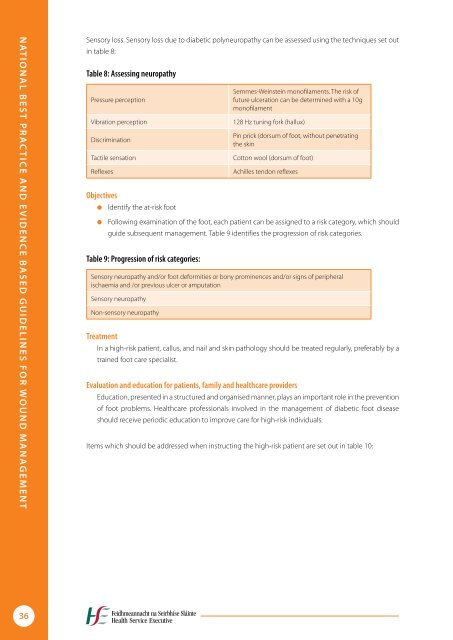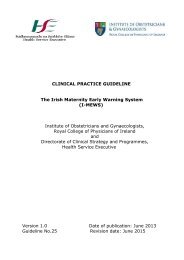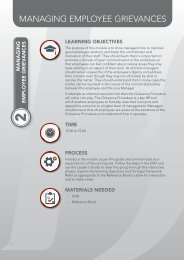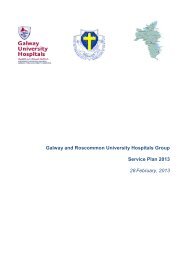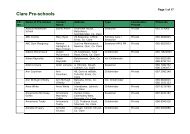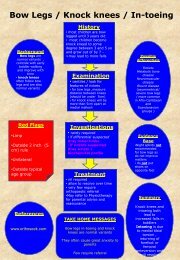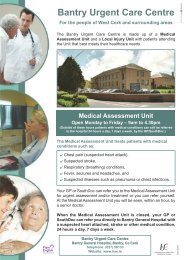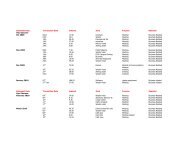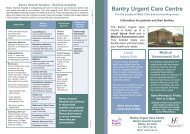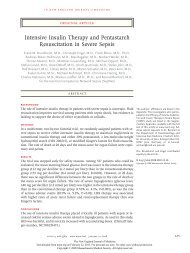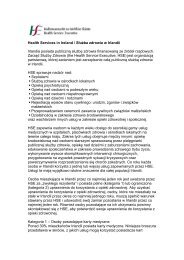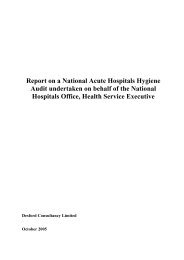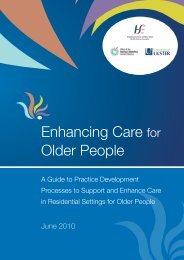National best practice and evidence based guidelines for wound ...
National best practice and evidence based guidelines for wound ...
National best practice and evidence based guidelines for wound ...
You also want an ePaper? Increase the reach of your titles
YUMPU automatically turns print PDFs into web optimized ePapers that Google loves.
NatioNal <strong>best</strong> <strong>practice</strong> aNd evideNce <strong>based</strong> guideliNes <strong>for</strong> wouNd maNagemeNt<br />
36<br />
Sensory loss. Sensory loss due to diabetic polyneuropathy can be assessed using the techniques set out<br />
in table 8:<br />
Table 8: Assessing neuropathy<br />
Pressure perception<br />
Semmes-Weinstein monofilaments. The risk of<br />
future ulceration can be determined with a 10g<br />
monofilament<br />
Vibration perception 128 Hz tuning <strong>for</strong>k (hallux)<br />
Discrimination<br />
Pin prick (dorsum of foot, without penetrating<br />
the skin<br />
Tactile sensation Cotton wool (dorsum of foot)<br />
Reflexes Achilles tendon reflexes<br />
Objectives<br />
● Identify the at-risk foot<br />
● Following examination of the foot, each patient can be assigned to a risk category, which should<br />
guide subsequent management. Table 9 identifies the progression of risk categories.<br />
Table 9: Progression of risk categories:<br />
Sensory neuropathy <strong>and</strong>/or foot de<strong>for</strong>mities or bony prominences <strong>and</strong>/or signs of peripheral<br />
ischaemia <strong>and</strong> /or previous ulcer or amputation<br />
Sensory neuropathy<br />
Non-sensory neuropathy<br />
Treatment<br />
In a high-risk patient, callus, <strong>and</strong> nail <strong>and</strong> skin pathology should be treated regularly, preferably by a<br />
trained foot care specialist.<br />
Evaluation <strong>and</strong> education <strong>for</strong> patients, family <strong>and</strong> healthcare providers<br />
Education, presented in a structured <strong>and</strong> organised manner, plays an important role in the prevention<br />
of foot problems. Healthcare professionals involved in the management of diabetic foot disease<br />
should receive periodic education to improve care <strong>for</strong> high-risk individuals.<br />
Items which should be addressed when instructing the high-risk patient are set out in table 10:


